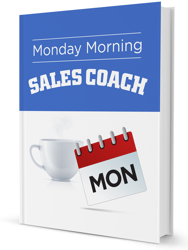The Fallacy of a “Full” Pipeline
Problem: Larry was a salesperson with 3 years experience selling printing services. He was constantly busy doing proposals and following up on the many prospects who regularly called him for quotes. Clearly, he had developed great relationships with his prospects and customers. While his sales manager was happy with his efforts (the company measured salespeople partially on their pipeline, which was the number of proposals outstanding), he was concerned about Larry’s closing rate. To make matters worse, Larry seemed to have a severe time management problem and was just not able to find time to prospect for new business.
Analysis: Salespeople often think that they’ll be successful if they make lots of proposals. Of course, it’s difficult to get a sale without making a proposal, but a focus just on generating a large number of proposals typically causes one to shortcut the qualifying process. When a prospect is not properly qualified, the closure rate drops significantly. It’s a rare prospect who would decline a salesperson’s offer to submit a proposal, even when they know there’s only a slim chance that they’ll ever buy. Prospects find it easier to say, “Thanks for the proposal, I’ll look it over. Call me next week.” And next week they have another excuse as to why they haven’t made a decision. In the meantime, the salesperson’s “pipeline” and expectations grow.
Solution: Making a proposal is not selling. Anyone can make a proposal. In fact, if all a company wants to do is get as many proposals on the street as possible, they should hire someone for minimum wage and just churn out proposals. Salespeople must learn to qualify thoroughly before making a proposal. They must learn how to get a commitment from the prospect that if the proposal meets their needs, they’ll give them the order. (Try getting this commitment without properly qualifying. It doesn’t work.) Fill your pipeline with quality, not quantity.


